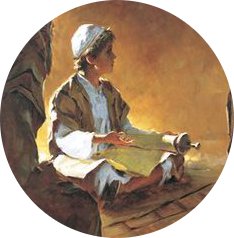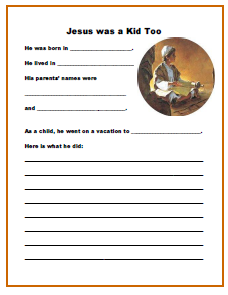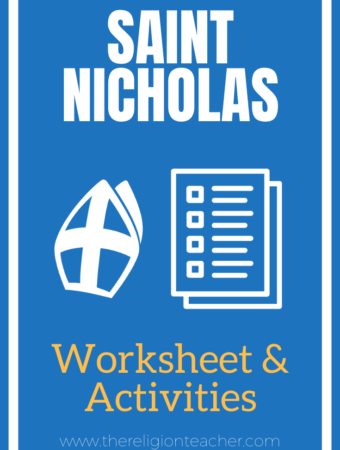 Very little is known about Jesus’ life when he was a boy. We have only one story about Jesus between his birth and life as an adult. In the Gospel of Luke, the boy Jesus is accidentally left in Jerusalem by his parents. They later find him listening and teaching in the temple as if he was an adult.
Very little is known about Jesus’ life when he was a boy. We have only one story about Jesus between his birth and life as an adult. In the Gospel of Luke, the boy Jesus is accidentally left in Jerusalem by his parents. They later find him listening and teaching in the temple as if he was an adult.
One of the most incredible things about Christ is that he became a human being just like us. We can relate to him even though he is God. Even children can relate to God knowing that Christ was once a child too! Use the lesson plan below to help young people come to know the boy Jesus.
Lesson Objectives:
- SWBAT summarize the story about Jesus as a boy in the Temple (Luke 2:41-52).
- SWBAT make connections between the story of Jesus as a boy in the Temple and their own lives.
The Boy Jesus: Learning Tasks and Activities
 1. Bell Work: Sometimes I Travel
1. Bell Work: Sometimes I Travel
As students enter the room, have them complete the worksheet titled, “Sometimes I Travel.” The purpose of this bell work activity is to help students think of their latest vacations so they can relate to Jesus’ vacation during the Passover holiday. (This activity is especially well timed after returning from summer, Christmas, or Easter vacations.)
When students are finished, either have them all read about their vacations to the class or have them partner up and read what they have written to another student in class.
2. Check Prior Knowledge
Students should be able to know the following before teaching this new lesson about Jesus as a boy:
- Jesus was born in Bethlehem.
- Jesus grew up in Nazareth.
- Jesus’ parents were Mary and Joseph.
- Jerusalem was the capital of Israel.
- There was a big temple in Jerusalem.
Ask each statement in the form of a question and see who is able to answer: “Where was Jesus born? Where did he grow up? What were his parents names?”
It is more likely that Jerusalem and the Temple will be new to the students. Show students a map of ancient Israel and a picture of the Temple in Jerusalem at the time of Jesus.
You could also use a KWL Chart to check for prior knowledge.
2. Read the Story about the Boy Jesus in the Temple (Luke 2:41-52)
Read the story about the boy Jesus as a class. There are a number of reading strategies and pre-reading strategies in The Religion Teacher’s Guide to Lesson Planning to choose from. At the very least, read the story as the teacher pausing to highlight important parts of the story and defining new words (Jerusalem, Passover, caravan, the temple, father vs. Father, and Nazareth).
3. Review the Story.
To be sure the students have listened to or read the story. Have them draw pictures of the main scenes:
- Jesus and his family travel to Jerusalem.
- Mary and Joseph can’t find Jesus.
- Mary and Joseph find Jesus in the Temple with the teachers.
- Jesus returned with his parents to Nazareth.
4. Check for Understanding of the Story.
Do a quick verbal check for understanding. Ask,
- Who were Jesus’ parents?
- Where did Jesus live?
- Where did he go on vacation for Passover?
- What was he doing when his parents lost him?
5. Assessment: Summarize the Story
Distribute the “Jesus Was a Kid Too” worksheet. Students will notice that it is similar to the worksheet they completed at the beginning of class. Have them complete this version based on the story you read as a class today. Collect the worksheets about the boy Jesus in the Temple to check for complete summaries of the story.
6. Extending and Refining: Relating to Jesus
Have students reflect on how their lives are similar to Jesus’ life. How were their vacations similar and different to Jesus’ vacation. Think about this in terms of how they got there, who came with them, why they went, etc. Also, ask them if their parents have ever lost them. What did that feel like? What did their parents feel like? If you have older students, have them journal about this.




VERY GOOD THE LESSON PLANS
Thank you very much! You can find more at https://www.thereligionteacher.com/catholic-lesson-plans/.
I love your picture of Christ. Do you know who painted it? Thanks! 🙂